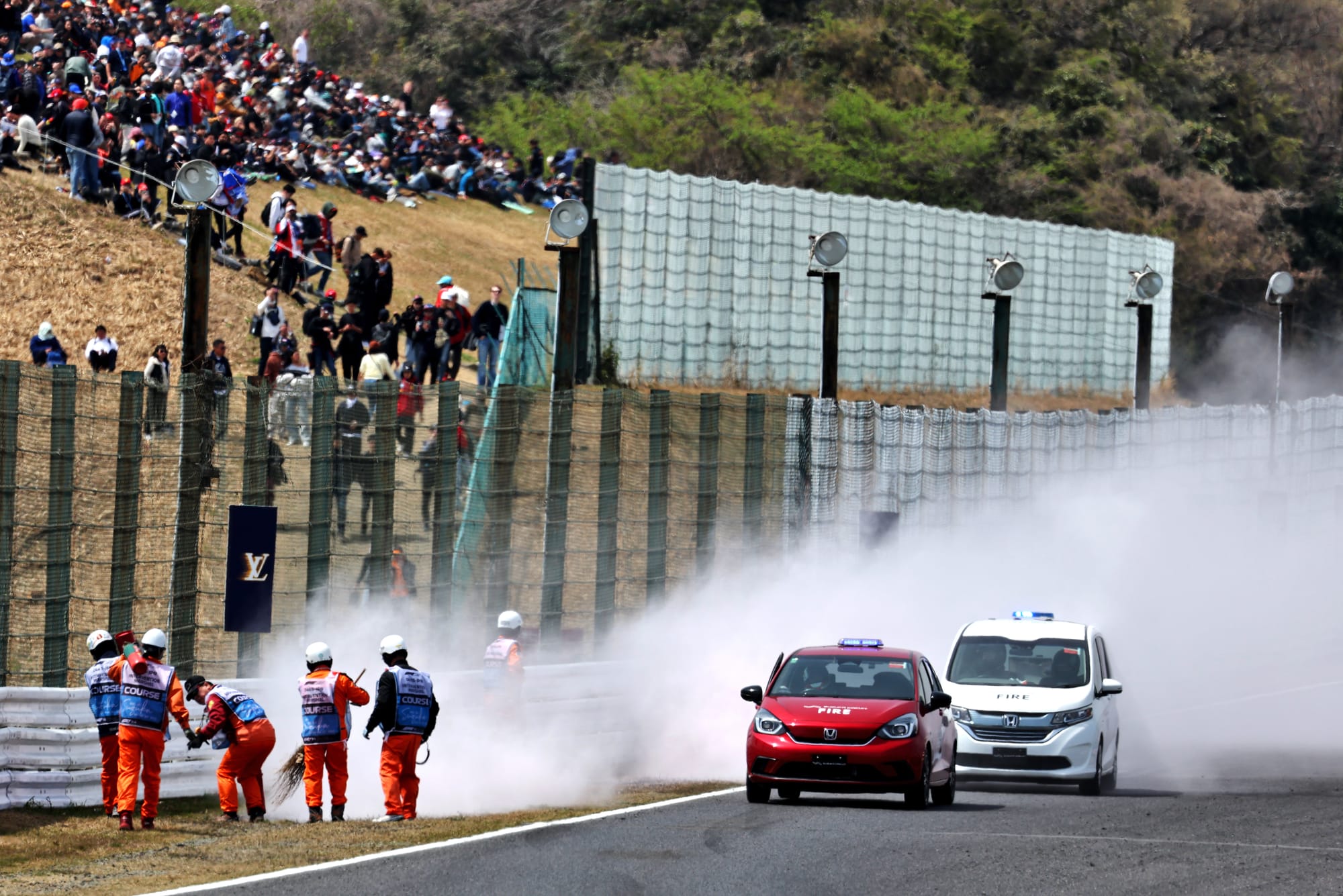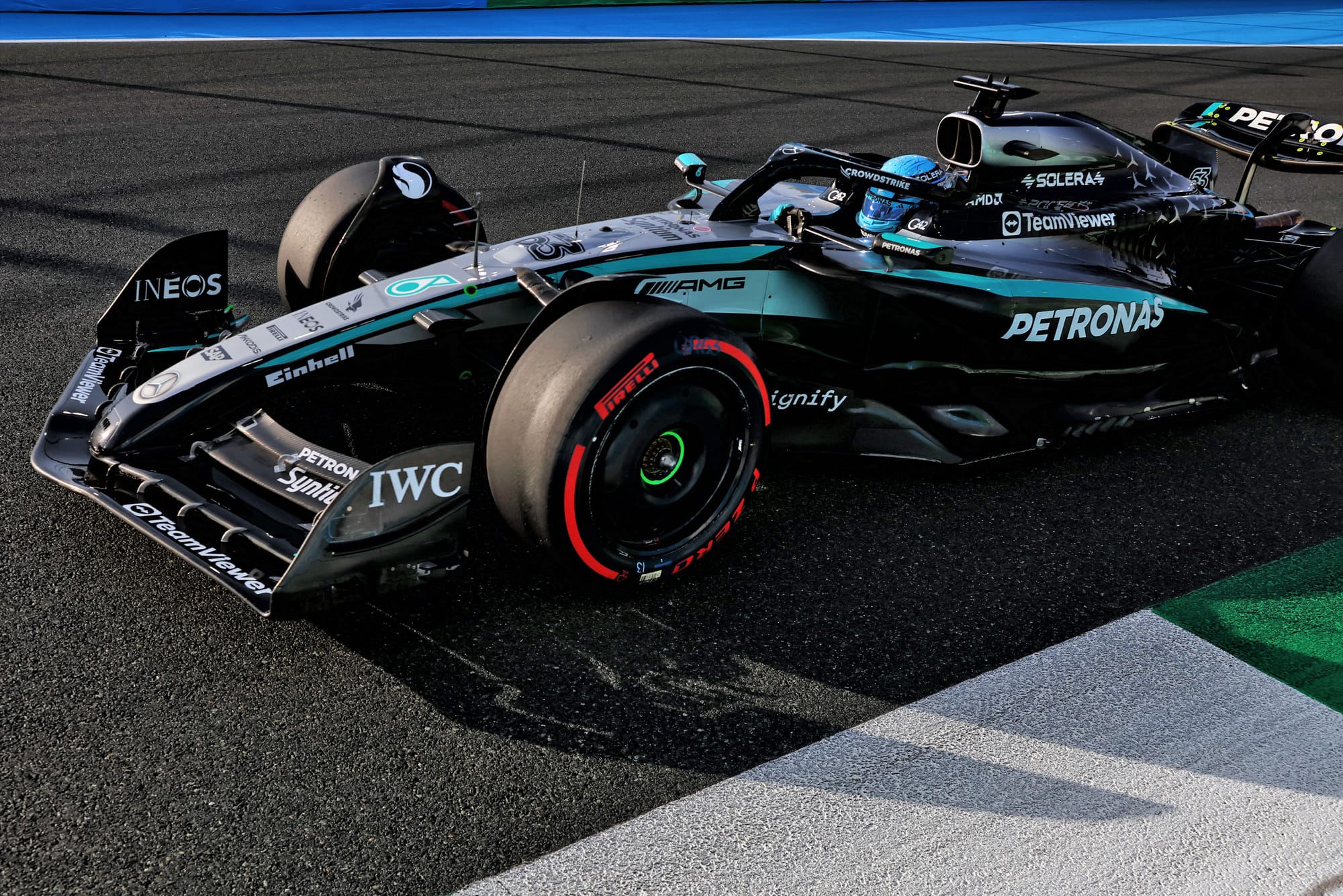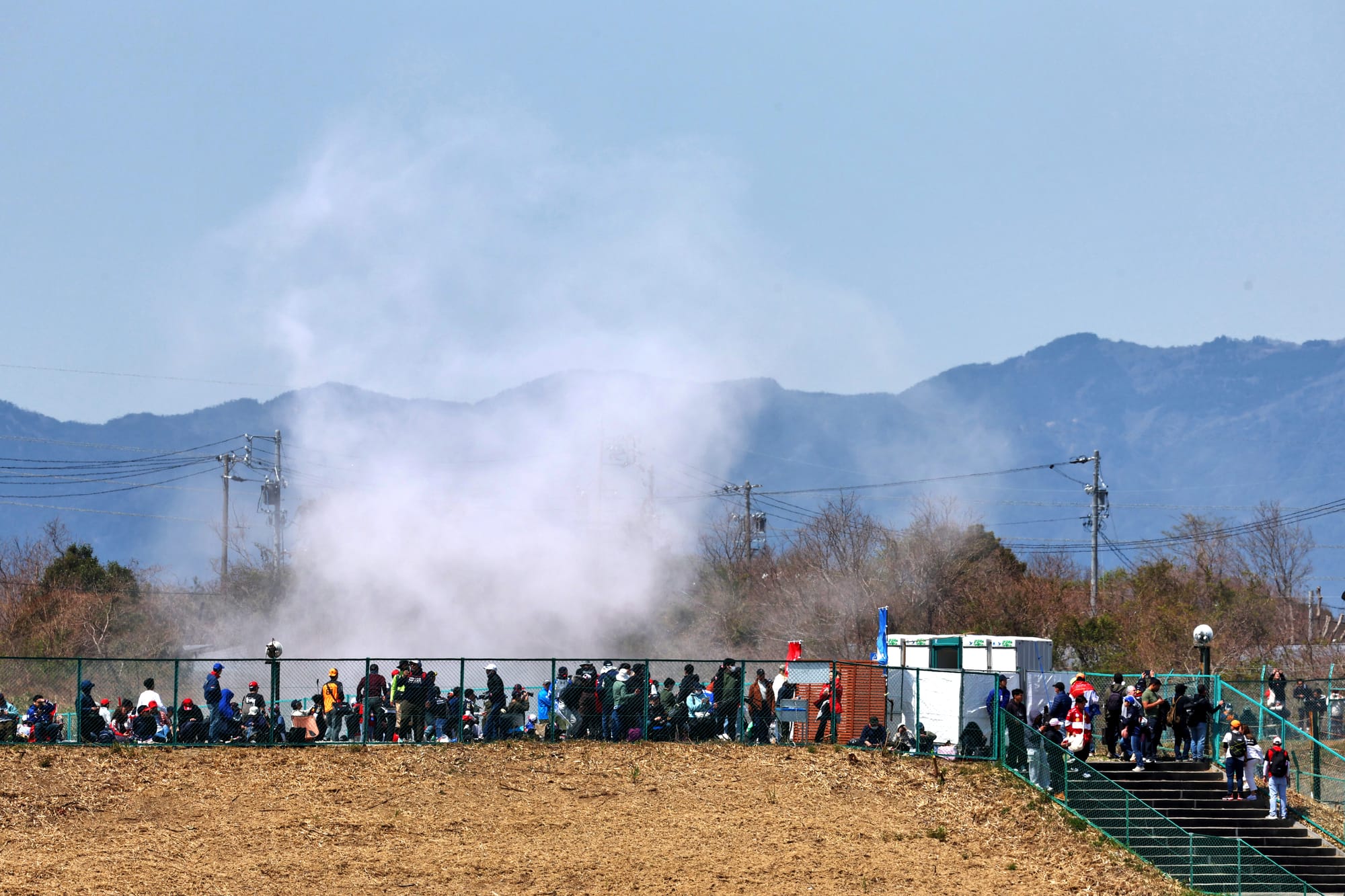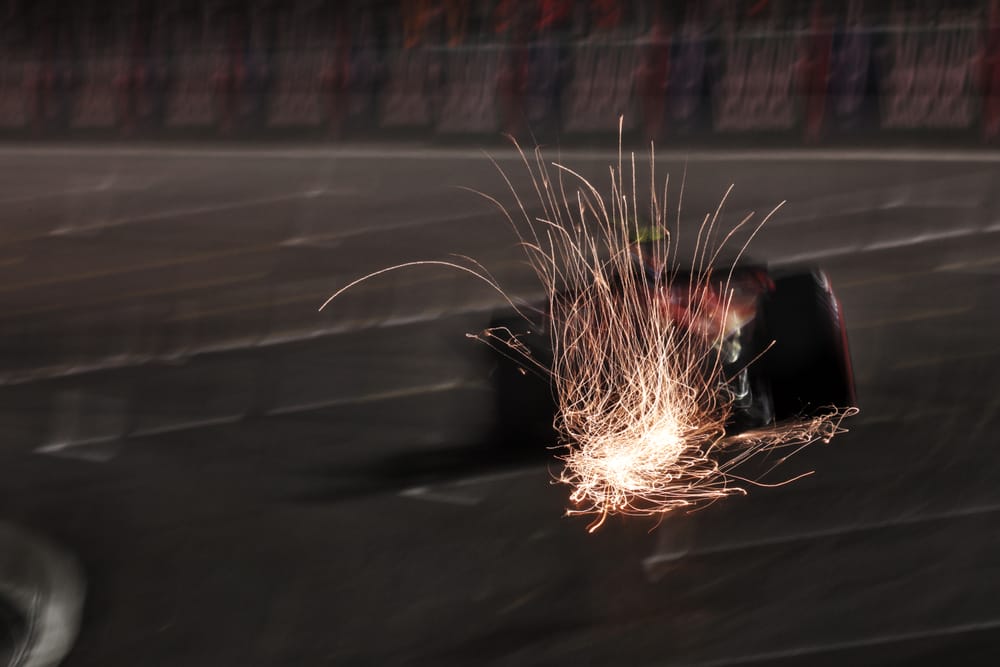Up Next

Formula 1 is to discuss changes to the spark-inducing skid blocks in a bid to avoid further grass fire problems over the remainder of this season.
The recent Japanese Grand Prix was heavily impacted by sparks thrown off the cars at various corners igniting dry grass that surrounded the track.
Sessions had to be stopped a total of five times over the Suzuka weekend – and it went all the way up to Q2 despite various preventative measures that had been taken by the FIA.
This included efforts like watering the off-track areas ahead of sessions, as well as cutting the tufts as short as possible and removing any old grass.
F1 escaped the issue of more grass fires becoming a factor in the race itself because overnight rain on Saturday meant the grass was soaking on Sunday.

Japan was not the first time that an F1 weekend had been impacted by such grass fires recently, with the 2024 Chinese Grand Prix also witnessing similar events.
As part of the FIA’s post-event analysis from Japan about what happened, one of the factors that emerged was the behaviour of the titanium shards that are shaved off the skid blocks as the car hits the ground.
These shards, which are white hot and create the sparks, are understood to retain their heat for quite a while – so when they land in grass, they can ignite the area around them.
With the FIA mindful that teams seem to be running their cars closer to the ground this year, which is increasing the number of sparks being thrown into the air, there are concerns that Japan may not be a one-off.

As a result, discussions have taken place with teams about what can be done to prevent further trouble over the remainder of the year.
While some of this will involve extra efforts to cut grass short and ensure fire risks are minimised, one factor that has not been ignored is the cars themselves – and especially the titanium element.
The Race has learned that a proposal has been put forward for a switch away from titanium skid blocks for selected races this year where the risks of further fires are quite high.
The idea is for teams to be forced to run steel alloy skid blocks at these events. While this alternative material will still deliver sparks, they will not be as bright white as the titanium ones.
However, of greater significance is that the steel shards will cool quicker so there will not be the danger of them landing in the grass and triggering fires.

The plan, to be voted on by teams at the next meeting of the Formula 1 Commission, is for the rest of this season to be split into races where titanium skid blocks will be used and those where steel will be mandatory.
This is decided by what the nature of the race venue is, with those venues surrounded by grass triggering the move to steel.
It is understood the division suggested for the remaining 2025 races is as follows:
Steel skid block races
Imola, Spain, Canada, Austria, Britain, Belgium, Hungary, Netherlands, Italy, US, Mexico, Brazil
Titanium skid block races
Miami, Monaco, Azerbaijan, Singapore, Las Vegas, Qatar, Abu Dhabi
F1 moved to the mandatory use of titanium skid blocks in 2015 after safety concerns about the previous use of tungsten.
While tungsten was denser and had a better wear rate, the FIA was worried about the dangers of the metal flying off the car in accidents and acting like a missile.
The choice of titanium was deemed a preferred solution not only for its mass but also because it was better for creating sparks.
A temporary use of steel skid blocks will reduce sparks slightly, but there will be some extra complications for the teams in that it weighs about three times more than titanium – so there will be implications in terms of the overall mass of the car.



